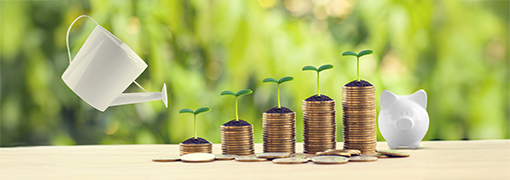

Supporting You At Every Stage
FSB is more than just a bank—it's a dedicated partner, providing expert advice for a Faster. Stronger. Better.® financial future.
Featured Resources For You

07/18/2025
Make Your Money Work Harder
Small investments can lead to long-term growth later. See how.

09/08/2025
Budget For the Holiday Season
Start the New Year stress-free with spending tips to avoid overspending.

08/04/2025
Assess Your Financial Fitness
Financial fitness looks different for everyone. See if you're on track.

04/12/2025
Dealership vs. Bank Auto Loans
When buying a vehicle, it's important to know the differences.

How to Improve Your Credit
Learn how to build & improve your credit score with tips from FSB.

Emergency Fund Basics
Learn how to protect your finances when the unexpected hits.
Helping You Buy a Home
From first-time buyers to seasoned homeowners, FSB offers personalized resources to help guide your next home purchase.
Featured Resources For Homebuyers

12/01/2025
Buying a Home?
Find out what you need to know as a potential homebuyer this year.

06/10/2025
Prequalified vs. Preapproved
Explore the key differences and how each can help you as a buyer.

How to Apply for a Mortgage
Before applying for a mortgage, get guidance from FSB's Mortgage Team.

The Benefits of Homeownership
Discover how owning a home can benefit your long-term success.

Spotting Fraudulent Postcards
Learn how to spot fraudulent mortgage postcards and protect yourself.
Securing Tomorrow, Today
Plan your financial future with guidance from FSB's local experts, offering resources to help you achieve your long-term goals.
Featured Resources For Your Future

12/09/2024
Find the Right Advisor
Determine how to select the financial advisor that aligns with your goals.

12/03/2025
Problem with Your Old 401(k)
Left a job with an old 401(k)? Learn what options you have.

12/07/2024
Tracking Your Net Worth
Learn about monitoring your net worth for a clear financial picture.
Focused On Your Business Goals
Explore helpful articles that guide your business journey, from daily operations to long-term growth.
Featured Resources For Your Business

12/09/2024
Securing an SBA Loan
Discover best practices to follow when trying to secure an SBA Loan.

12/08/2024
Get the Most From Your Bank
Learn how to maximize your banking experience to support your business.

12/07/2024
Is It Time to Expand?
Evaluate the right moment to scale your business for greater success.

Is It Time to Make the Switch?
Learn when to separate business and personal funds and why it matters.

Choosing a Business Bank
See how the right bank can simplify finances, support growth, and more.
Additional Financial Resources
Banking Products & Services
- ACH Transfer vs. Wire Transfer—What’s the Difference?
- Auto Loan Financing Options: Dealership vs. Bank Financing
- Can You Deposit Cash at the ATM?
- Free Tax Filing Resources Available in 2025
- How to Find Your Tax Documents in Online Banking?
- How Does Mobile Deposit Work?
- How Safe is Your Money: The Basics of FDIC Insurance
- What is a Certificate of Deposit (CD)?
- What Is Compound Interest? How It Works & Why It Matters
- What is FSB's Routing Number, and How Can You Find It?
Business Insights
Debt Management
Lifestyle & Saving Tips
Mortgage Essentials
Wealth Management
Financial Calculators
Auto Loan Calculators
Credit Card & Debt Management Calculators
Loan Calculators
Mortgage Calculators
Personal Finance Calculators
Retirement Planning Calculators

Plan Your Financial Future
Whether you're budgeting, planning for a loan, or saving for a big purchase, FSB's financial calculators can help you make informed decisions. Start crunching the numbers today!

